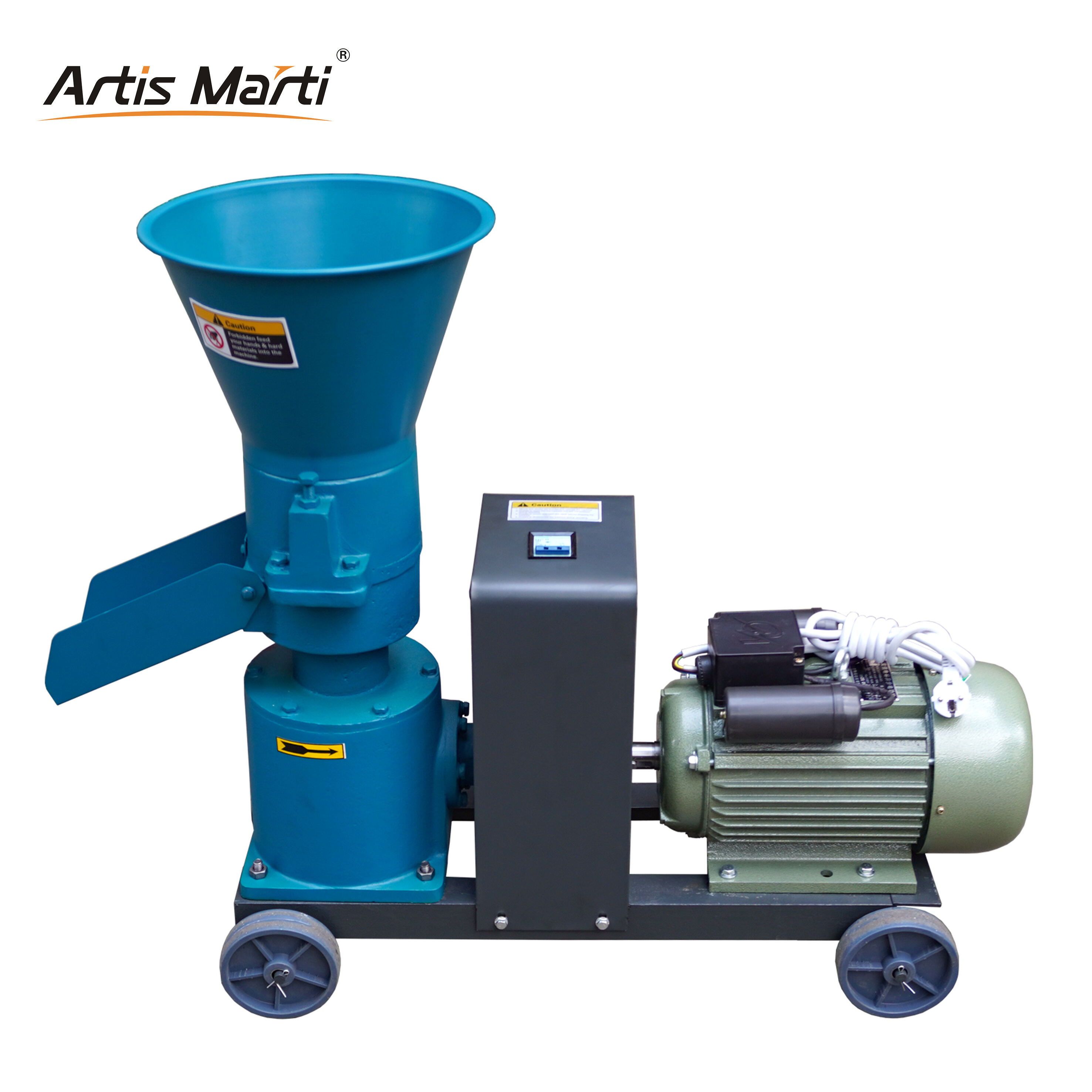Introduction
In case of livestock farming, quality of feed pellets have the most significant impact since it directly impact livestock nutrition, health, and in turn farm profitability. Choosing the right pellet machine is important not only for the efficiency of the feed production but also the uniformity of nutrition supply for the animals. There are so many kinds of Feed Pellet Machine in the market, it can be somewhat troublesome not only for the farmers who want to choose a suitable feed pellet making machine for themselves but also the standard of pellet that they want, the price of the machine they want, and they have to consider whether or not they should add high technology for their machines. Hopefully this guide including the steps above will make your life easier.
Types of Feed Pellet Machines
Generally speaking, feed pellet machines can be divided into two types:
Flat Die Pellet Mills: rather precise for small production purposes or with a small variety of feeds.
Ring die pellet mills: Suitable for larger scale farms and commercial feed production for their higher capacity and efficiency.
Understanding how these types function differently and what they emit, and you will understand what you need to choose a machine that can perform a task on the farm.
Key Features to Consider
If you go for a feed pellet machine, make sure that the following features will be necessary too.
Capacity and Throughput: Choose a machine that suits the production capacity required on your farm to avoid under-utilisation of production or creating a bottleneck in the production chain.
Material: Stainless steel: Has a durable, corrosion-resistant surface, carbon steel — Is cheaper but has lower abrasion resistance
Look For Efficiencies In Drives And Energy Savings: Opt For As Energy-efficient Motors And Drive Systems As Possible To Reduce Operating Costs
Operating and maintenance ease: The machine should have the interface that is easy to operate and maintain which makes the machine cost-effective.
Pellet Quality and Nutrition
Quality of Pellet affects Feed and animal access to Nutrition. Pellets need to have an accurate diameter, the exact desired length and nutritional congruity to fit them to the animals optimally. Controlling moisture, as moisture is a critical ultimate factor in regards to the quality of pellets pressed, is of great importance because pellets must not fall apart while stored and/or during feeding.
Cost Considerations
The return-on-investment for a feed pellet machine is tough to argue with, but you need to carefully budget your capex — it's a relatively expensive kit to buy — as well as total cost of ownership, including energy and maintenance costs too. It also needs to consider raw materials prices and the burden of translating into feed.
Capacity Planning
The need for feed to be factored according to the number of livestock and the phase of growth is a primary driver of capacity planning. Consider the various aspects of scalability and future expansion plans so that you are assured the machine can sustain growth without having to replace it in the near future. It is equally crucial to have a balance between your feed capacity and the demand for feed and the amount of feed you are able to store as well.
Environmental and Safety Related Factors
There is no defence for sidestepping agricultural and food safety standards. Environmental noise and dust control beneficiaries are to be compensated as per the program schedule Safety parts like emergency stop and guarding device should be standard or inline with feed pellet machines.
Automation and Application of Technology
Automating processes can be used to optimize this complicated process of pellet production. Various farm management software and IoT based devices utilized by farmers, which enable controlling of the pelleting process. More sophisticated tracking systems inundate you with details about your device performance and then offer suggestions for how to improve performance.
After-sales support and technical assistance
This is especially important for complex machinery, such as feed pellet machines, to ensure that after-sales service is in place. Reduce the downtime and make the tool function better with help from the technical support team and technical assistance from the manufacturer. Operator training and education is critical too – the machine is used to its full capability when operated by trained hands and high safety standards can be achieved.
Conclusion
Investing in Appropriate Feed Pellet machine is Somewhat Considerable Decision as the Quality of Cattle Feed making & Profit Margins of the farm depend on it. Considering machine type, the quality of the pellets, price, and integrated technology, farmers would also make the correct selection based on their goals, needs, and requirements. By selecting an appropriate feed pellet machine, you can not only get better productivity, livestock well being but in return a bigger yield eventually.




